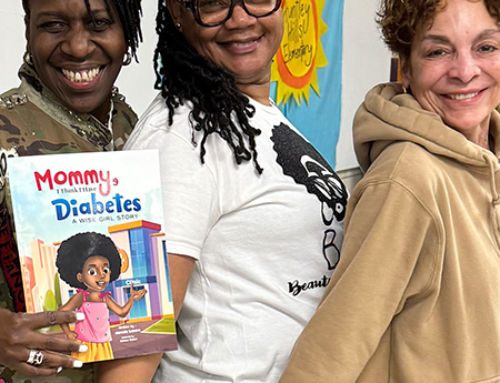‘You can really notice subtle changes’ during that time, Juvenile Diabetes Research Foundation volunteer says,
“That’s often going to be because children are home with their parents during the school year,” said Sarah Benedetti, a volunteer with the Southern Texas Chapter of JDRF, which includes San Antonio. “You may not be noticing day-to-day throughout the day patterns as much as you will during the summer when you’re with kid’s day-in, day-out, and you can really notice subtle changes.”
JDRF said an estimated 8.75 million people globally are living with Type 1 diabetes, with 1.52 million of them under the age of 20.
Without rapid diagnosis and appropriate treatment, Type 1 diabetes leads to diabetic keto-acidosis and rapid death, making awareness and education about the condition critical.
“So, you really need to be watching carefully. Type 1 diabetes onset can be very quick. So, if you are noticing increased thirst, increased frequency of urination, those are going to be the first two symptoms that a lot of people will spot,” Benedetti said.
A common first sign in children of all ages is usually a sharp increase in thirst and frequent need to urinate. This generally starts when blood sugar levels are persistently above 200 mg/dL.
Children will feel an unquenchable thirst as fluids are continuously drawn from all areas of the body to pass the excessive amounts of glucose being filtered by the kidneys. A common sign is when potty-trained toddlers and children start wetting their pants or bed as they are unable to keep up with the intense need to urinate.
Children may present several or all of these top four symptoms if not diagnosed with T1D:
-
Intense thirst and an increased need to urinate
-
Fatigue or lethargy
-
Changes in vision, such as blurred vision
-
Unexplained weight loss, and intense hunger
Even if it’s not an emergency, if you suspect your child may have T1D, insist that their healthcare team draw a blood sample to measure blood sugar levels and collect a urine sample to measure both glucose and ketone levels. Those with a family member with T1D are at an increased risk (15x) for developing the disease. However, 85% of T1D diagnoses are people with no known family connection.
Benedetti said early diagnosis is crucial for managing the condition effectively.
“Take your child to the pediatrician and ask for a blood glucose test that’s going to be a finger prick and a urine test where they are going to test for glucose in the urine. And at that time, your pediatrician will be able to say, ‘Yes, this looks like an abnormal reading, this is what we’re looking at or maybe it’s something else that we need to be considering,’” Benedetti said.
She said a diagnosis can be overwhelming for a parent and added that JDRF has a robust chapter in San Antonio that is available to assist with more information and local connections.
“And while nobody wants to be a part of this of this club, it’s a wonderful, supportive group of people who can help you learn the crucial tools and skills and connections that you’re going to need to support your child as you figure out the best way to continue their happy, healthy life that they had before their diagnosis,” Benedetti said.





